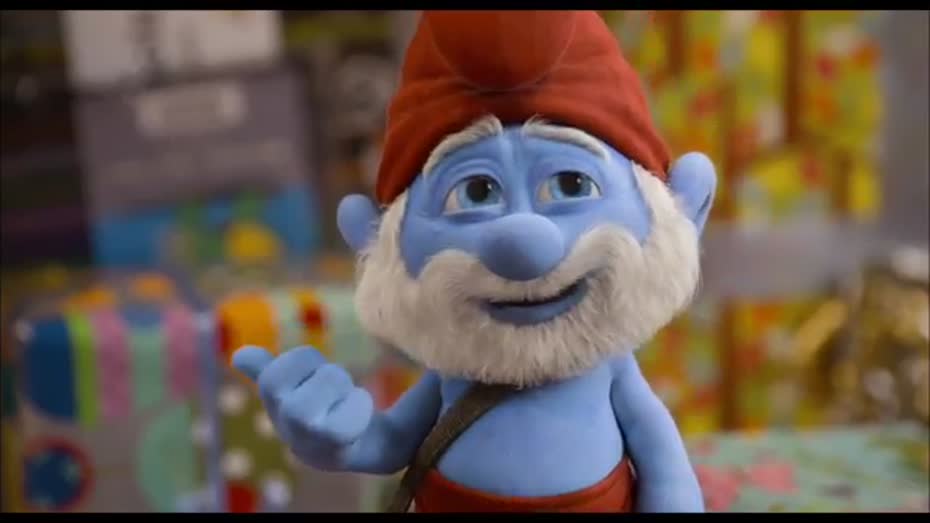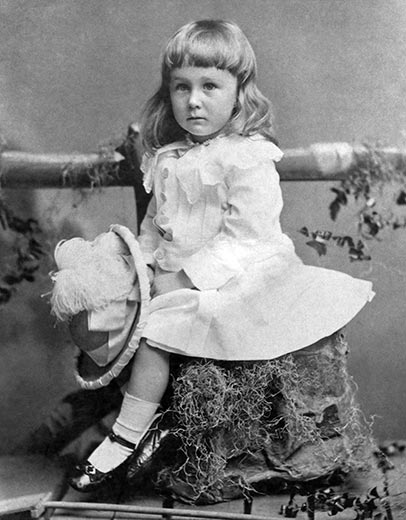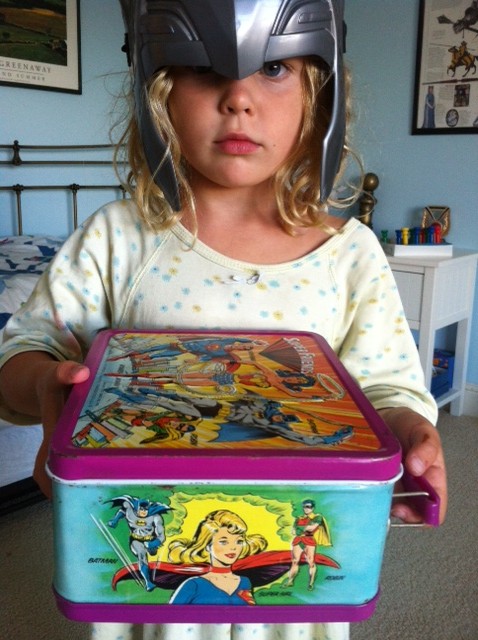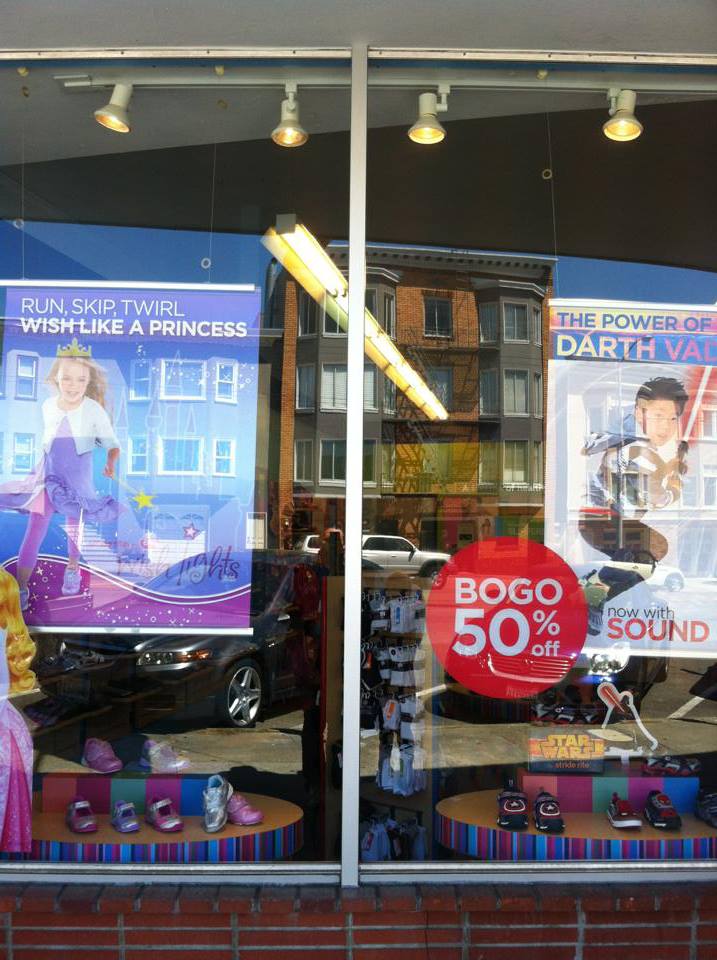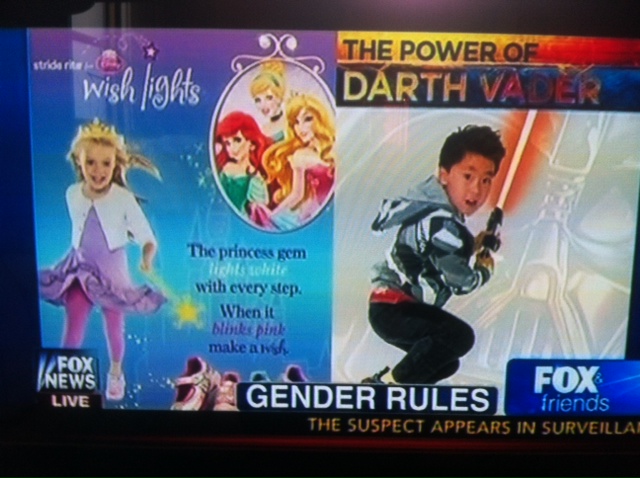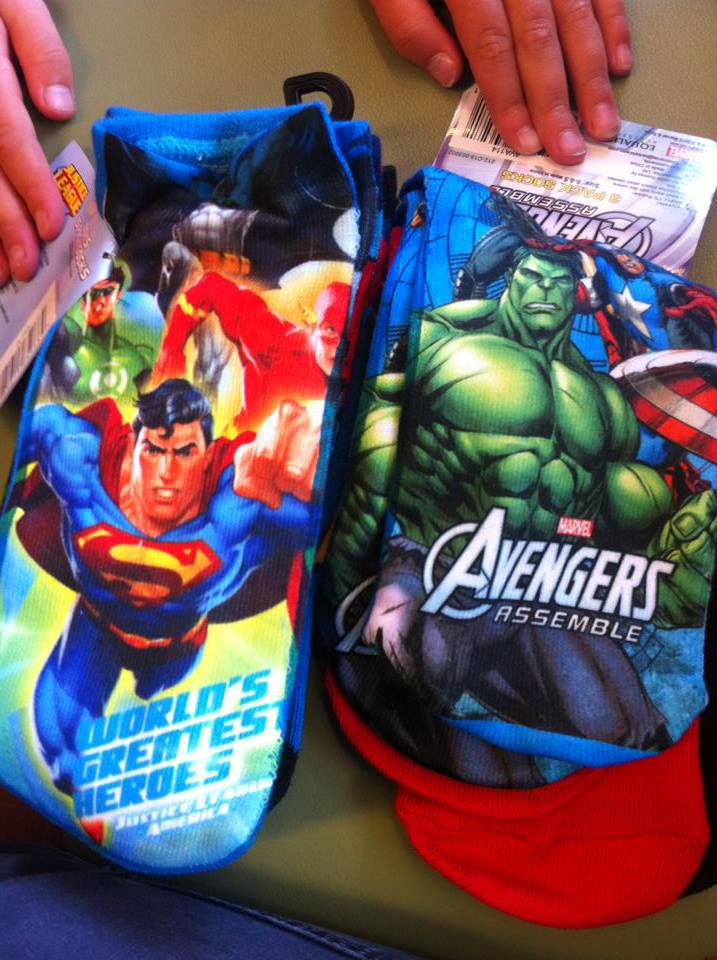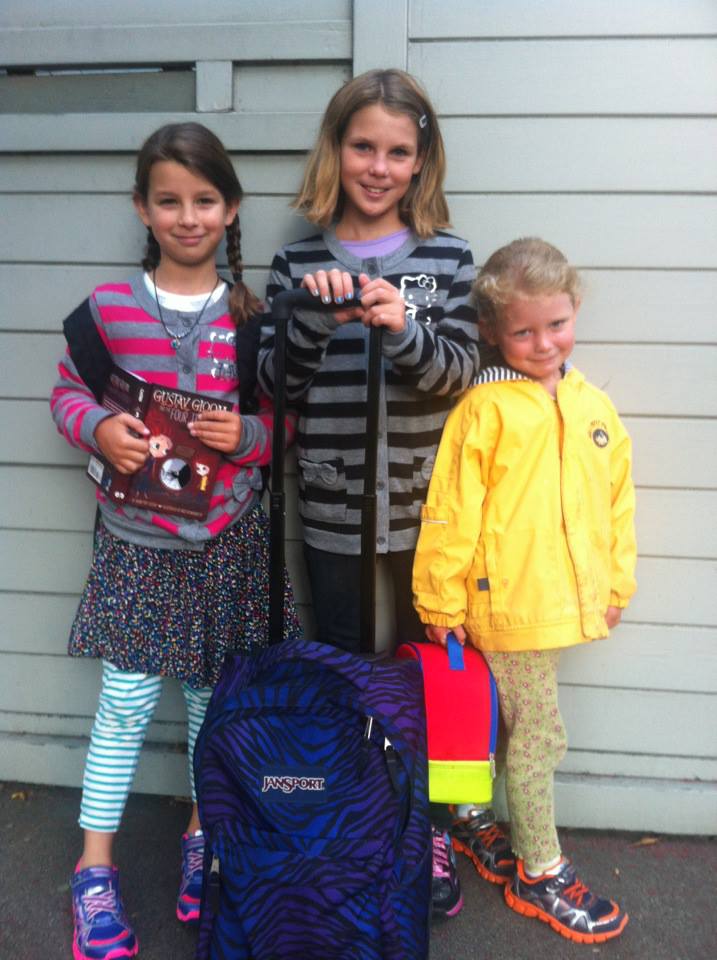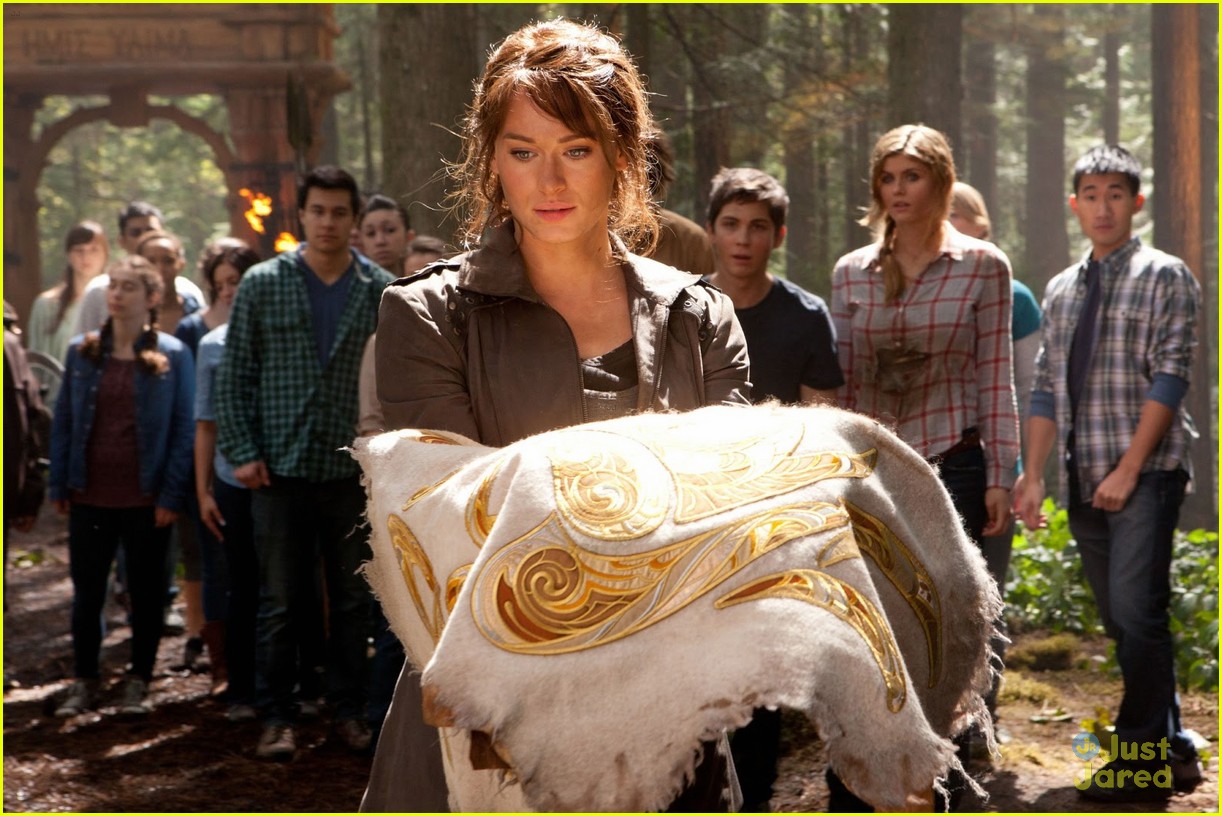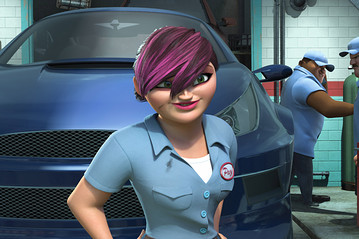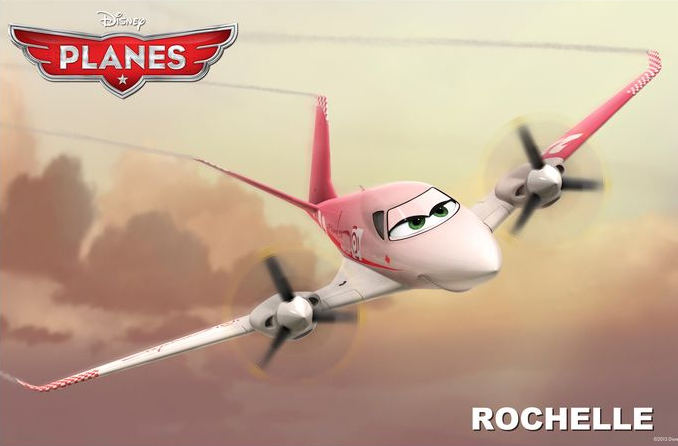My expectations were low but “Smurfs 2” surpassed them.
Not only does “Smurfs 2” feature the famous posse of too many to count males accompanied by just one female, but this movie is all about fathers. A movie for kids centered on fatherhood could be great, but when the Smurfs are already so creepily male dominated, the erasure of mothers is alarming and disturbing. The good, golden-haired female pitted against the evil, dark-haired female trope, central to “Smurfs 2,” is so tired in kid fantasy world (not to mention the grown-up world) that I was slack jawed to see it again, even though, of course, I shouldn’t have been. That’s why it’s a trope, right?
Did you know that evil Gargamel created Smurfette as a ploy to infiltrate the Smurfs? That’s right, Smurfette, the only female Smurf, isn’t even a real Smurf. It’s only when Papa Smurf comes to care for Smurfette as a daughter that he uses a magic potion to transform her. At that point, not only does he change her skin to blue but her hair to blonde, thus becoming Smurfette’s true father.
“Smurfs 2” opens with that backstory and then brings us to present day with a scene showing the Smurfs gawk at Smurfette as she swishes her blonde locks around in slow-mo. But there’s trouble in paradise: every year on her birthday, Smurfette is haunted by a dream in which she once again turns evil, and her hair, once again, turns brown.
Cut to Gargamel who has created/ fathered a new race: the Naughties. Evil, dark-haired Vexy has a similar mission to Smurfette’s years ago. Gargamel sends to Vexy to infiltrate Smurfville to recover his “daughter,” hoping that Smurfette will reveal to him the secret potion Papa Smurf used to turn her into a Smurf, thus Gargamel can create Smurfs himself.
Cut to the human world where Patrick is having a birthday party for his son, Blue, to which his father, Victor, arrives. (Got that? Three generations of males.) Victor serves the kids corn dogs that happen to be fried in peanut oil. A young party guest has an allergic reaction, and the celebration is ruined. That’s the latest in a long line of events that lead to Patrick’s deep frustration with his loving but bumbling father. Turns out, Victor is not Patrick’s biological father, but his step father. Patrick’s “real” father walked out on him years ago. So you see, the conflict of true paternity experienced by Smurfette– wondering if her “real” father Papa Smurf or Gargamel– is mirrored by the Patrick’s own dilemma: can his step-father be his “real” father?
Both Papa Smurf and Gargamel essentially “give birth” without any need of females, kind of like our own Judeo-Christian creation myth and its independent and endlessly resourceful male God. While Smurfette has no mother at all, Patrick’s mother is hardly mentioned in the movie. I couldn’t even tell if she’s dead or alive.
Now, for the good news. There are three Minority Feisty in this movie. This was my first Smurf movie so I don’t know if that’s a record, though the pathetic female to male ratio is of course where the term, the Smurfette Principle, originated from. In case you don’t know what Minority Feisty means here’s a cut and paste from Reel Girl’s review of “Planes.”
Today, if you see a movie for children, it will most often have a male protagonist, while females, who are, in fact, half of the kid population, are presented as if they were a minority. Within that minority, there will be a strong female or two who reviewers will invariably call “feisty.” I call these characters the “Minority Feisty.” The trope has evolved from the Smurfette principle in that there is often more than one, and she is presented as strong. But rarely is she the protagonist. Her power, lines, and screen time are carefully and consistently circumscribed to show that she is not as important as the male star. Still, the Minority Feisty is supposed to pacify parents, making them feel that, unlike those sexist films of yesteryear, this movie is contemporary and feminist.
Smurfette spends most of the movie as a captured damsel in distress who the male smurfs, and mostly male humans, must rescue, but like most Minority Feisty, she has her moments of courage and brilliance. Also, upon befriending her enemy, Vexy, while Smurfette never says, “I want to stay with you because I can’t stand being the only female in Smurfville,” she does express joy at having the sister she never did.
Grace is another Minority Feisty. She’s Patrick’s wife, Blue’s mom, and she’s cool and brave. But the central human, with the conflict and the transition, not to mention the lines and the screen time, is clearly Patrick.
Vexy is an okay Minority Feisty. I enjoyed her badness and watching her transition. Did you read that part about transition? We now have–are you ready– 2 female Smurfs! And Vexy stays brunette. Thus with “Smurfs 2,” the Smurfette principle truly evolves into the Minority Feisty: two females and one of them is a bad-ass. Is that progress or what? According to the Geena Davis Institute, at this rate, it will be only 700 years before we get gender equality in the fantasy world.
Reel Girl rates “Smurfs 2” ***SS*** for gender stereotyping
See Reel Girl’s Gallery of Girls Gone Missing from Children’s Movies in 2013


